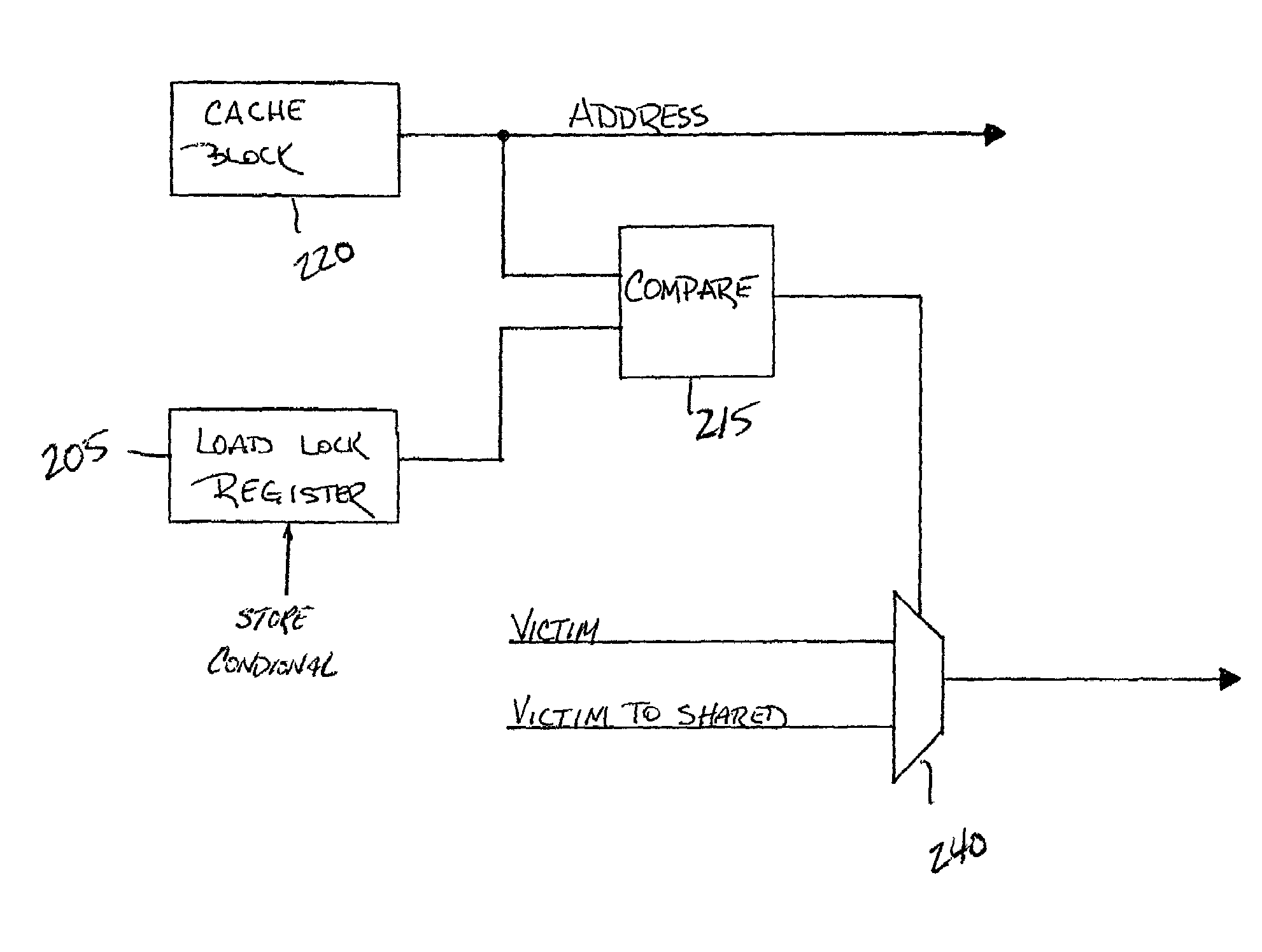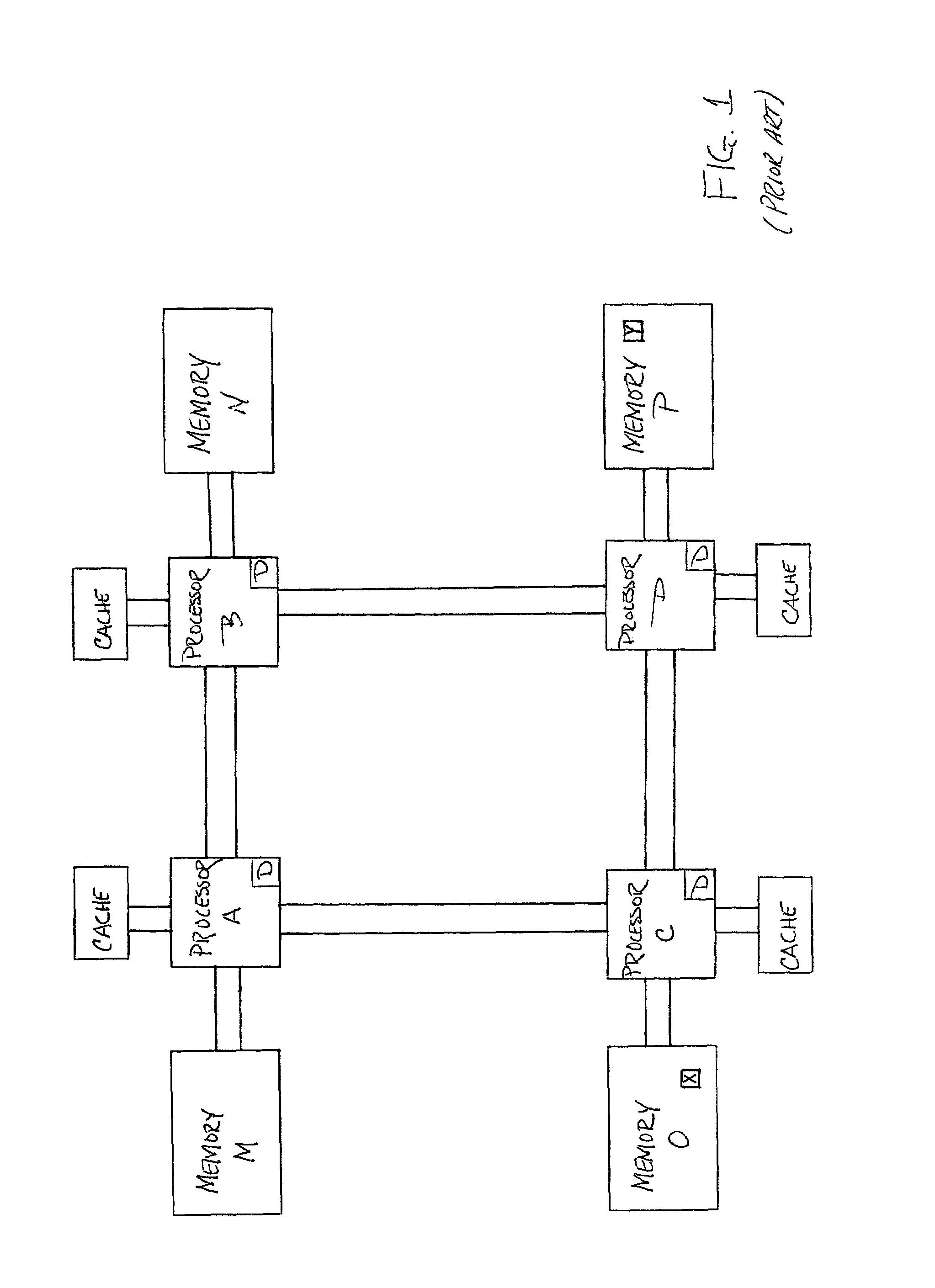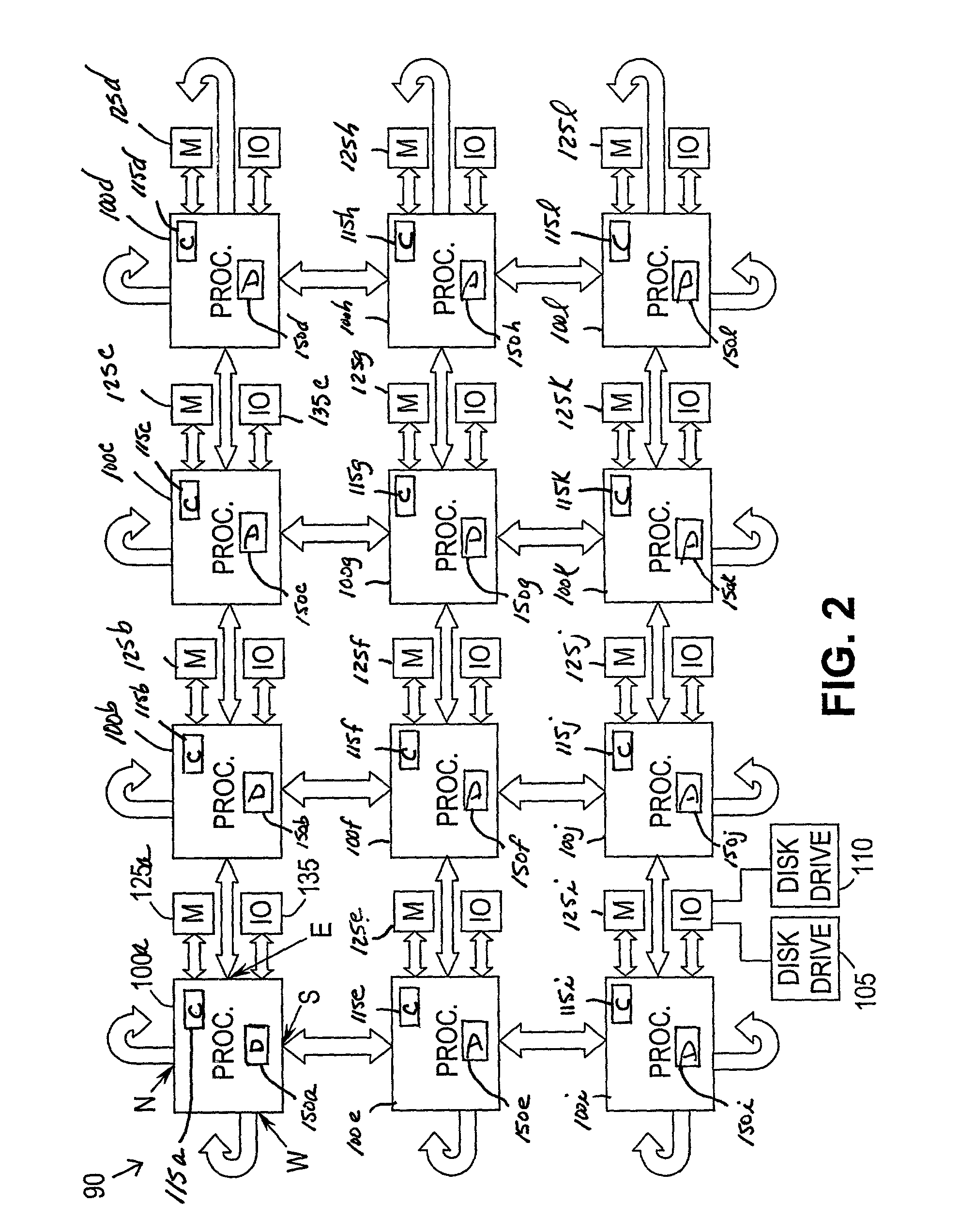Mechanism for handling load lock/store conditional primitives in directory-based distributed shared memory multiprocessors
- Summary
- Abstract
- Description
- Claims
- Application Information
AI Technical Summary
Benefits of technology
Problems solved by technology
Method used
Image
Examples
Embodiment Construction
[0029]Referring now to FIG. 2, an exemplary computer system 90 is shown to illustrate the principles of the present invention. As shown in FIG. 2, computer system 90 comprises a plurality of processors 100, each of which has an associated memory 125 and an input / output (“I / O”) controller 135. In FIG. 2, the computer system 90 includes twelve processors 100a-l for purpose of illustration. Each processor preferably includes four ports for connection to adjacent processors. As such, each processor 100 can be connected to four other processors. The processors on both ends of the system layout (e.g., 100a and 100d) wrap around and connect to implement a 2D torus-type connection. Although twelve processors 100a-l are shown in the exemplary embodiment of FIG. 1, any desired non-prime number of processors (e.g., 64, 128, 256, etc.) can be included.
[0030]As noted, each processor may have an associated I / O controller 135. The I / O controller 135 provides an interface to various input / output de...
PUM
 Login to View More
Login to View More Abstract
Description
Claims
Application Information
 Login to View More
Login to View More - R&D
- Intellectual Property
- Life Sciences
- Materials
- Tech Scout
- Unparalleled Data Quality
- Higher Quality Content
- 60% Fewer Hallucinations
Browse by: Latest US Patents, China's latest patents, Technical Efficacy Thesaurus, Application Domain, Technology Topic, Popular Technical Reports.
© 2025 PatSnap. All rights reserved.Legal|Privacy policy|Modern Slavery Act Transparency Statement|Sitemap|About US| Contact US: help@patsnap.com



